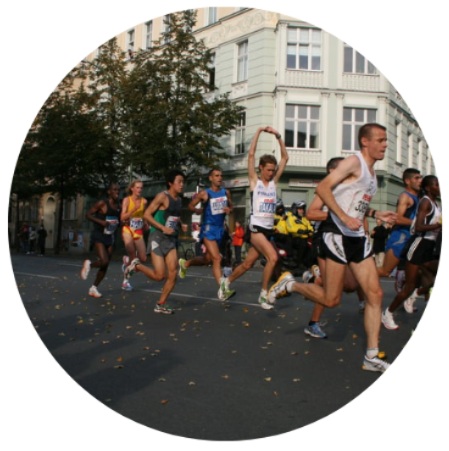Running Experience Survey 2025
7: Economic impact of races
Some running events attract large numbers of visitors to the host city or region – not just the runners themselves, but also their friends and families. Many stay for a day or more, bringing potential spending to local shops, hotels, and restaurants.
The Running Experience Survey included a series of questions designed to quantify the economic impact of running events.
Data from other publicly available sources has been used to ascertain estimates for hotel and restaurant prices and typical shopping spends. These numbers are based on national averages, and will vary from location to location.

7.1 How many visitors?
Supporters per race participant
It’s not only runners who visit and spend money in a host city or region on race day – often they bring friends and family with them as well.
The proportion or race participants who come with supporters varies between race types, as shown here.
‘Major Track’ refers predominantly to major competitions rather than regular club meets.
7.2 Hotels, restaurants and shopping
How many hotel stays
The proportion of runners who stay overnight close to the race venue also varies by race type, as shown here.
Road and major track races are most likely to involve a hotel stay.
Hotel stays per 100 racers
By combining the data used to create the above two charts, we can get an idea of how many people stay in hotels as a proportion of total race participants.
Assuming runners who bring supporters are accompanied by two friends or family members on average, and that they stay in a hotel if the runner does, this chart shows the number of people staying in hotels per 100 racers for different forms of race.
Meals out per 100 racers
A similar logic allows us to estimate the number of people who eat out at least once per 100 race participants.
Shoppers per 100 racers
We can also calculate similar figures for the number of people who go shopping in the host city or region for every 100 race participants.
Again, the underlying assumption is that supporters act in the same way as the runners they come to support in terms of their shopping behaviour.
7.3 Spending levels
Overall spend per race participant
Finally, by estimating a typical spend for a hotel stay, shopping trip and meal out, we can put all of the above figures together to generate an average spend per race participant (including any supporters who accompany them), as shown here.
Spending assumptions here are:
Hotel room (1 for lone runners, 2 for runners with supporters): £159 (based on: VisitBritain.org)
Typical cost of meal out per person: £53 (based on: OpenTable)
Typical leisure shopping trip spend per person: £70 (based on: Barclays).
You can isolate individual types of spending by clicking the coloured key at the top of the chart.
London Marathon figures
Of course, not all races under the headings ‘Road race’ or ‘Fell race’, for instance, are alike. Some attract much more spending than others.
As an extreme case, we used the 100+ survey respondents who provided feedback based on their experience of the London Marathon – the country’s most high profile and prestigious event – to compare spending here to the broader trends.
Average spend at this race was very high, as illustrated by the additional column on the left of this chart.
This is down to a combination of higher numbers of supporters per runner and higher levels of all three kinds of spending.
Again, you can isolate individual types of spending by clicking the coloured key at the top of the chart.
Running Experience Survey
© Neil Baxter 2025
Please always cite using: Baxter, N. (2025). Running Experience Survey. Running Studies. https://runningstudies.co.uk/running-experience-survey